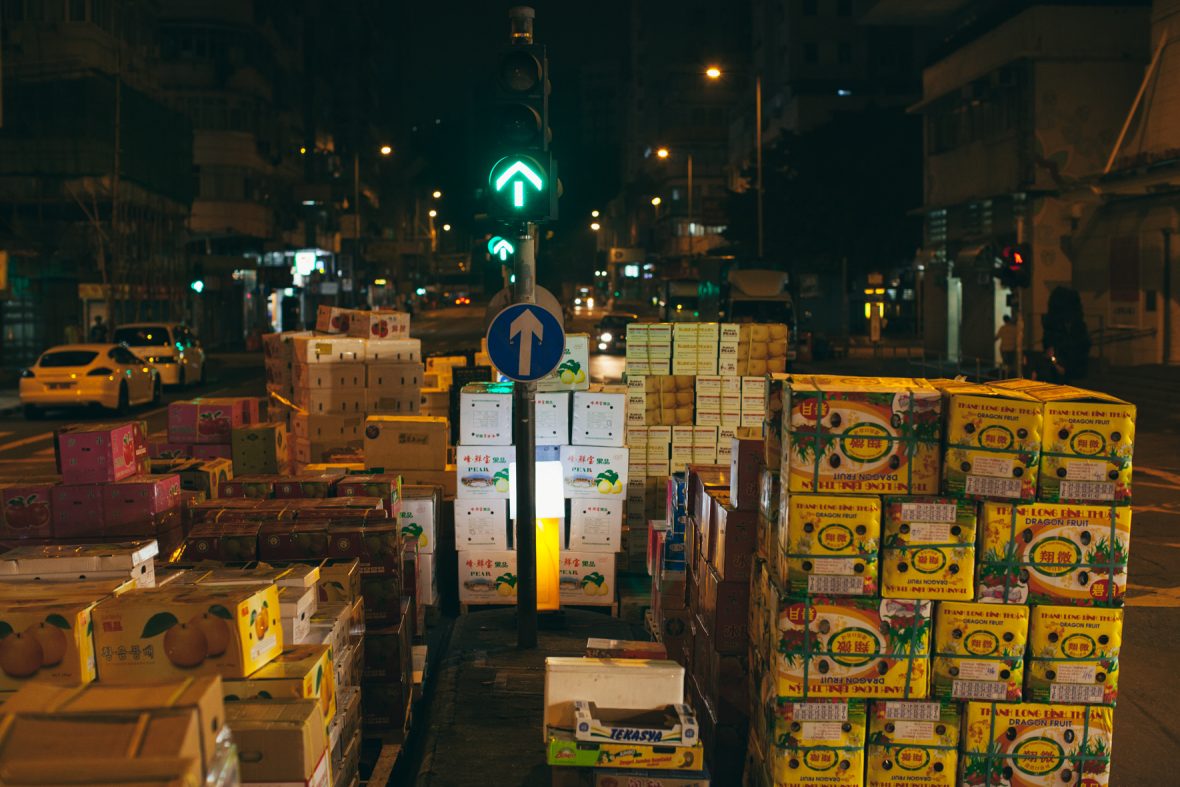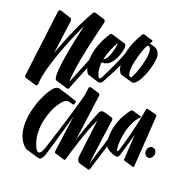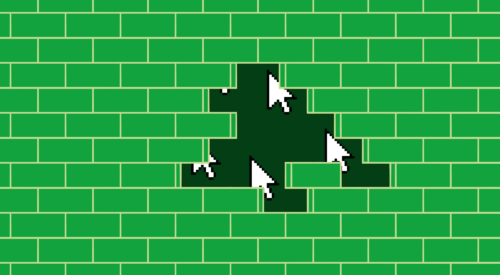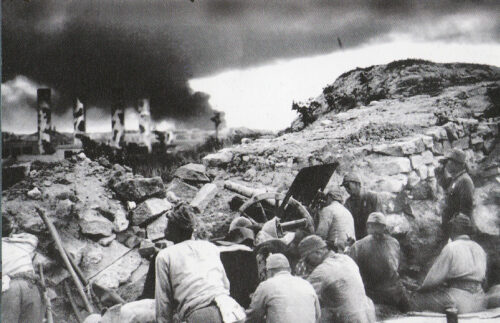This article was originally published on Neocha and is republished with permission.
A rumor making its way around the internet claims that the historic Yau Ma Tei fruit market, Hong Kong’s largest, is run by the local crime syndicates known as triads. Intrigued, I decided to visit the market at its busiest time, between midnight and 7:00 am, to investigate.
Late at night, it’s easy to imagine drug deals and fistfights in the dimly lit corners of the buildings lining the street, most of which date back over a century. On the night I visit, a scent of citrus, rotten melon, and sweat hangs in the air. Shirtless men maneuver carts piled high with pallets of Washington apples and Japanese strawberries, while the luckier ones ride tiny, seatless forklifts from the loading zone to the storefronts.
Nearly half of all fruit sold in Hong Kong passes through Yau Ma Tei. Most workers arrive near midnight and work until 8:00 am. It’s not an easy job, and the schedule is grueling, but some of the old-timers have been here for over forty years.
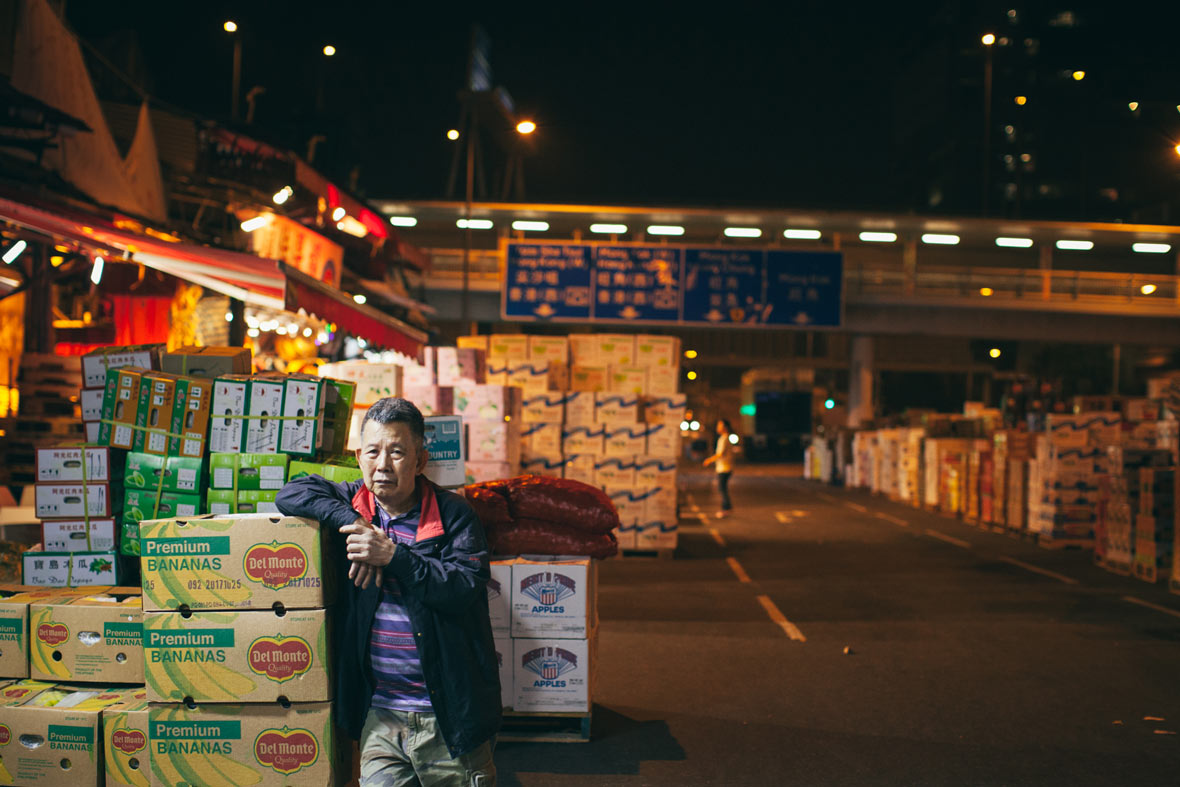
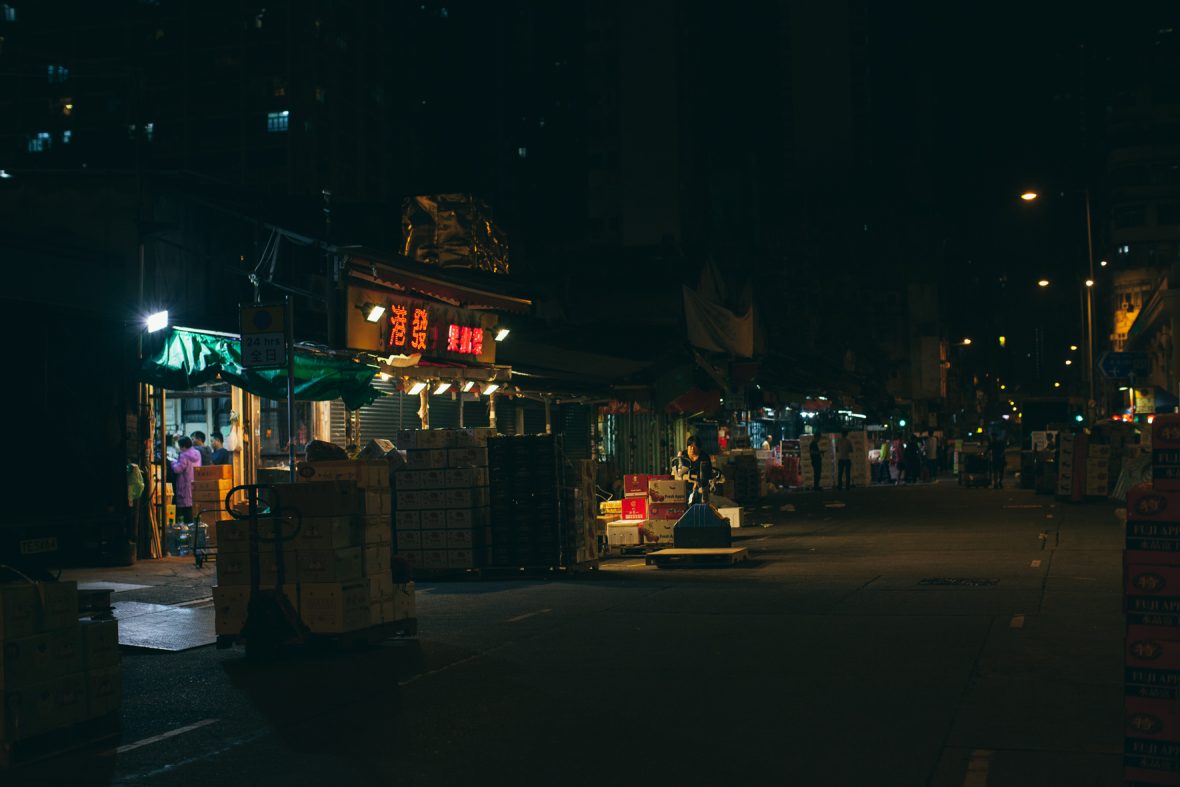
Making my way around the market, chatting with the vendors and other workers, I meet an octogenarian by the name of Mr. Lam, who vehemently denies the rumors.
“No, no, no! The gangs never ran the market!” he insists. “In its heyday, there were nearly 400 stands, each with 10 to 20 employees. Most of them did physical labor at night. Some of the guys this job drew in were also in gangs. But the owners were usually well-to-do people who just wanted a business they could be proud of.”
Not far away, in a stall selling persimmons, snake fruit, Asian pears, and other delicacies, shirtless man named Mr. Yung recalls how in the past gangs would sometimes converge on the market, making any business impossible. “It used to be pretty dark around here. Gangs would come around, so regular people were afraid to walk through the area.”
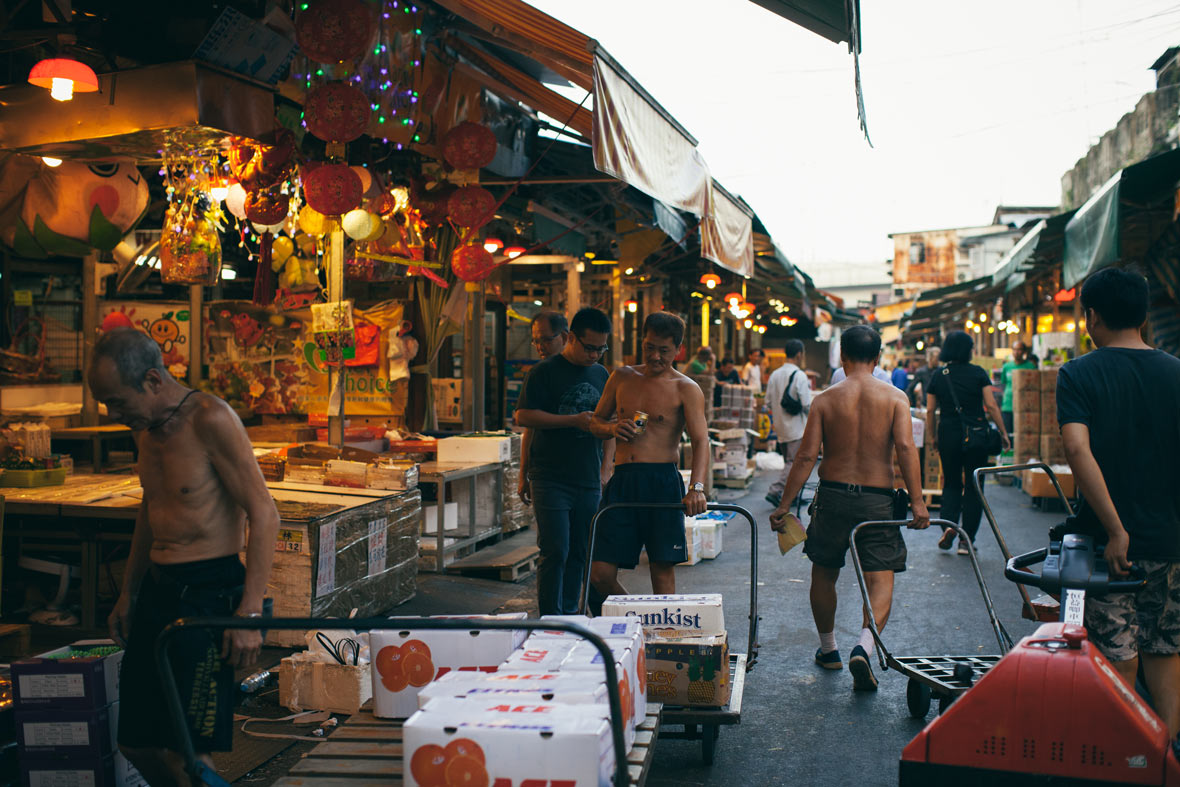
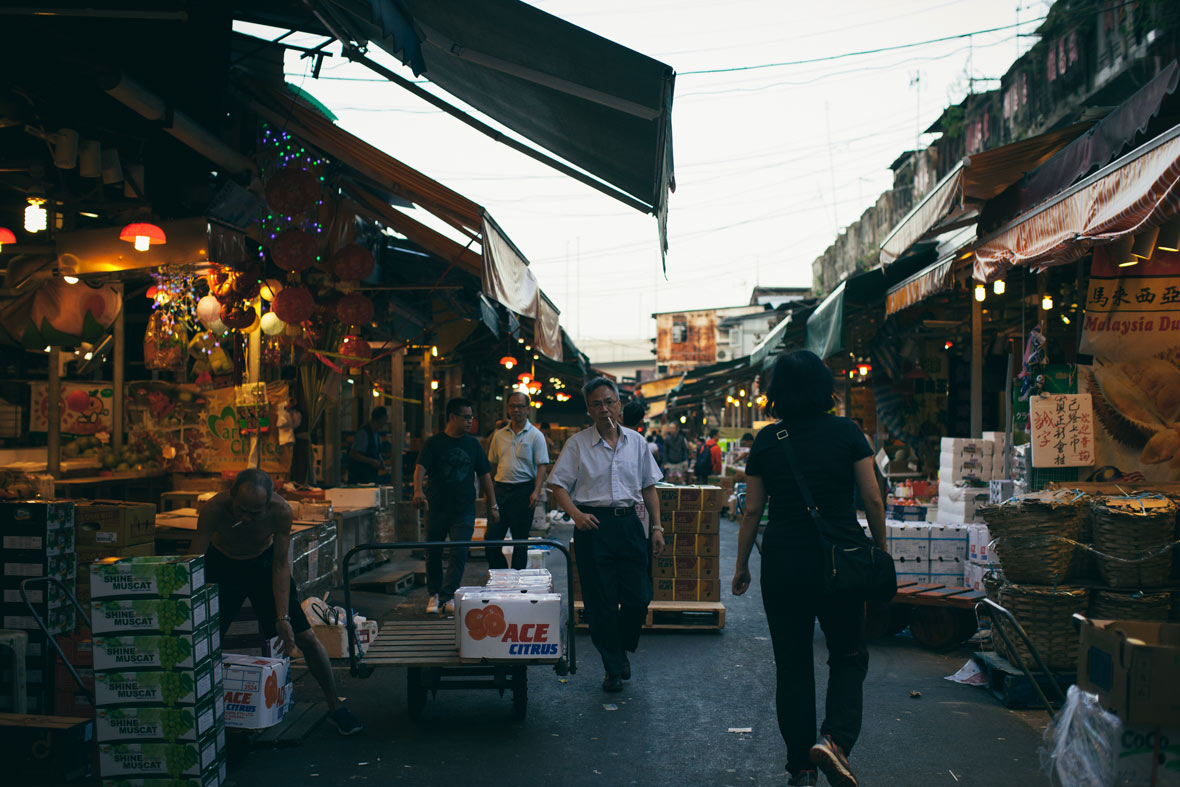
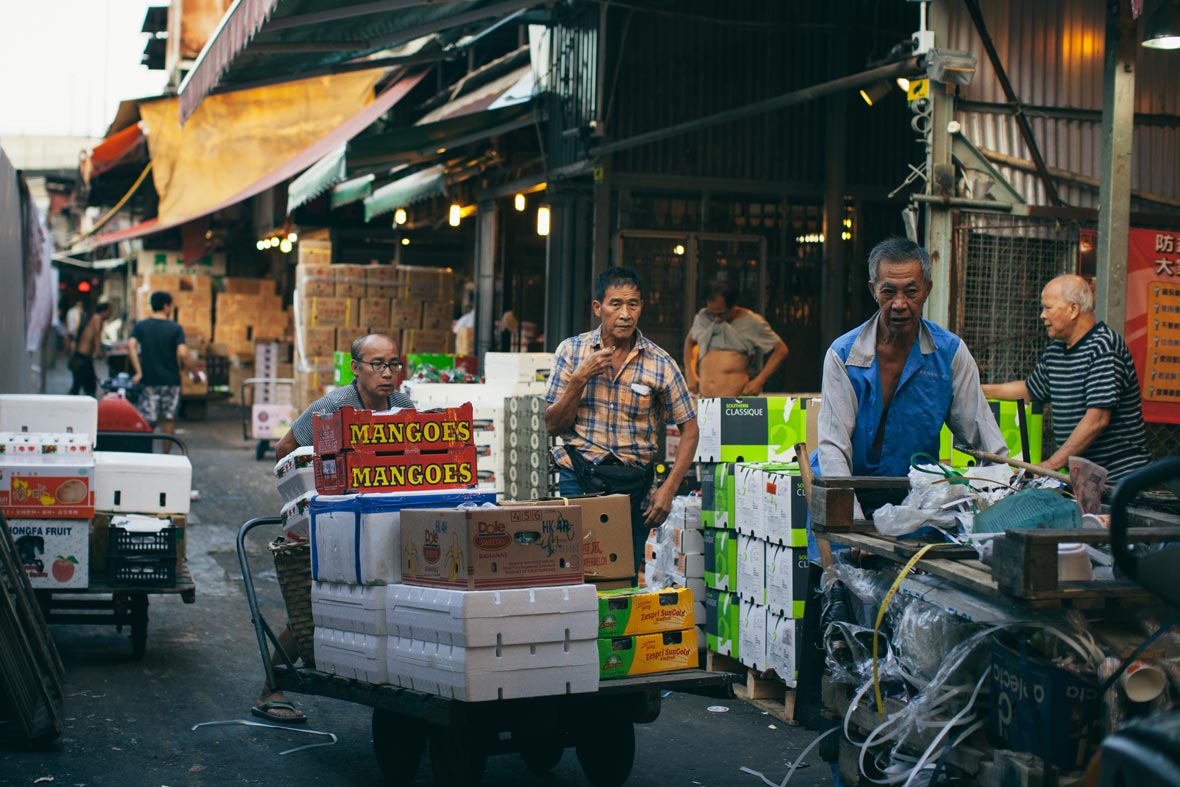
Still, Yung agrees with Lam that stall owners are mostly honest businesspeople, even if some of their employees had ties to the triads. “The transport guys were usually gang members, and I think some of them still are,” he adds. “They used to fight over the stalls. Now and then, they’d get into a brawl in the market over territory. Today the police come through all the time, so it’s safe for tourists. Some people even take wedding photos here.”
The triads may mostly be gone, but their freewheeling ethos remains. When I ask the veterans of the market why they’ve stayed around all these years, “freedom” is a common refrain.
“My family doesn’t like it, but they’re used to it. They understand this is how I make a living,” says Mr. Ng, known around the market as Sau Nga Zai, or Snaggletooth. Nicknames are the designation of choice around here. “This guy’s name is Sai Leung—Boss Leung,” he says, pointing to his partner, “because he’s always giving orders.”
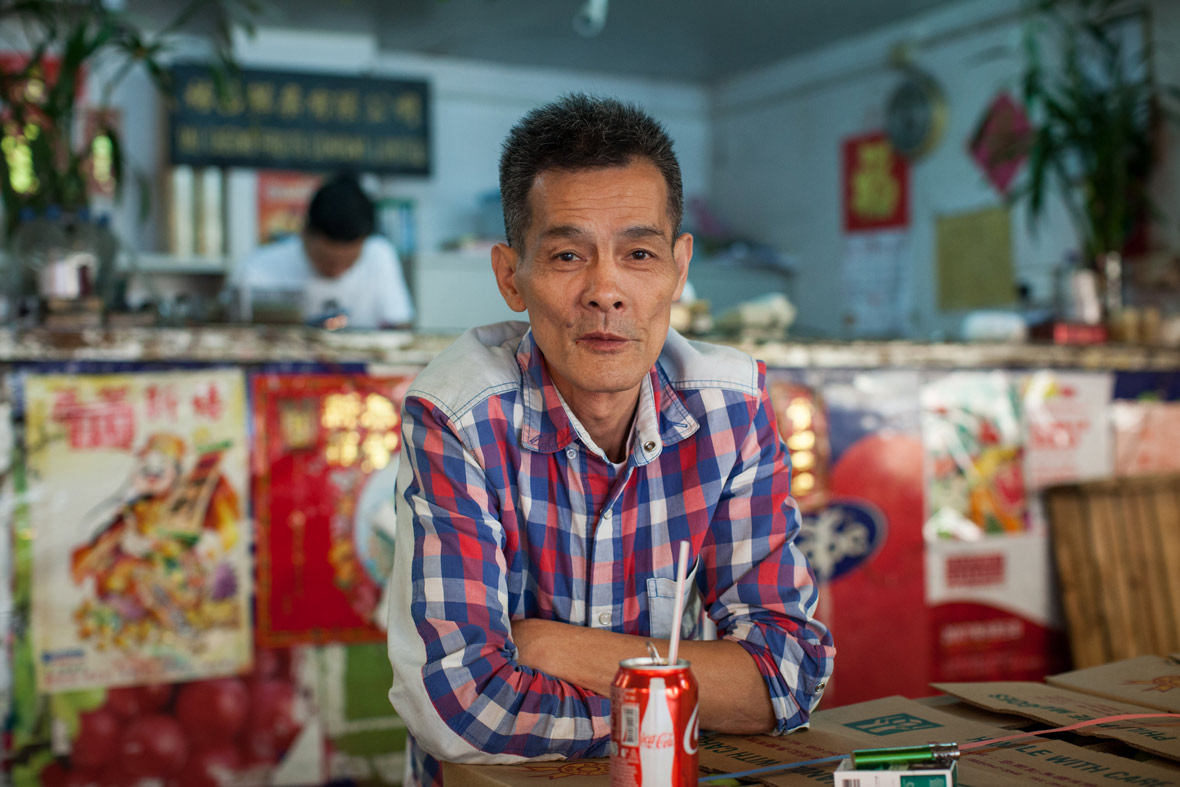
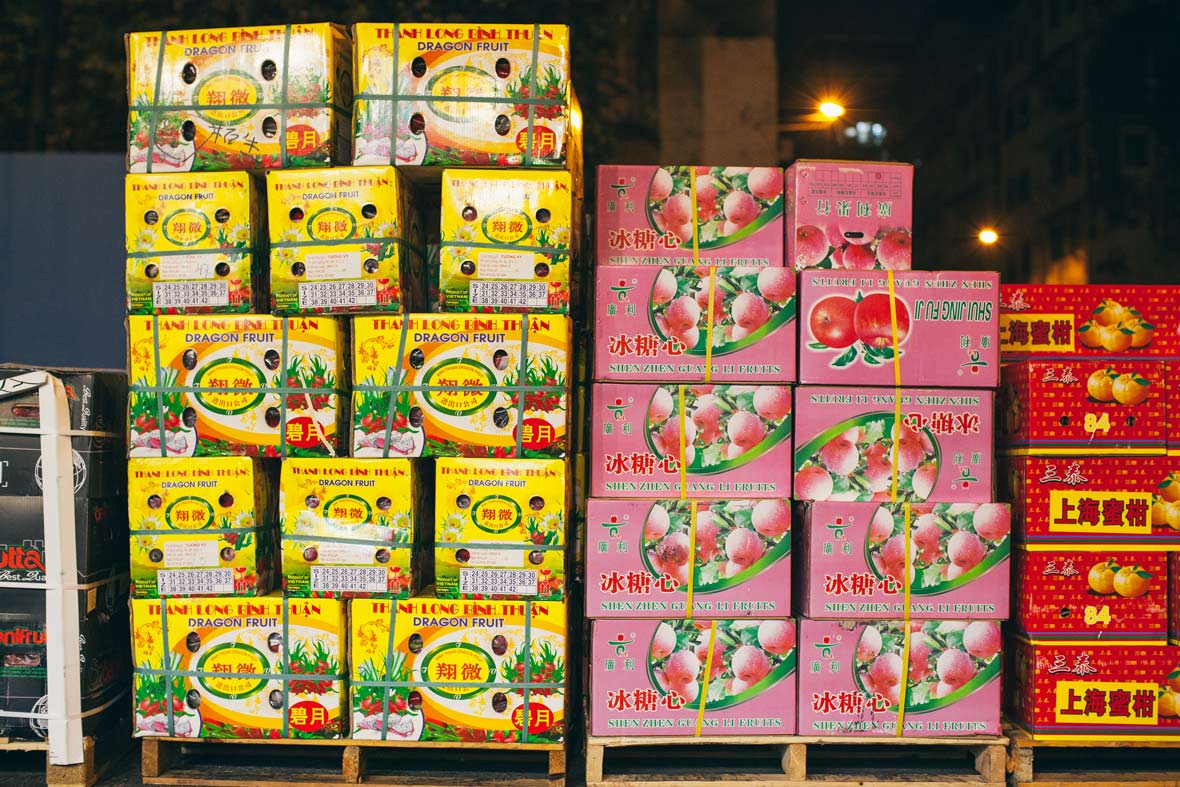
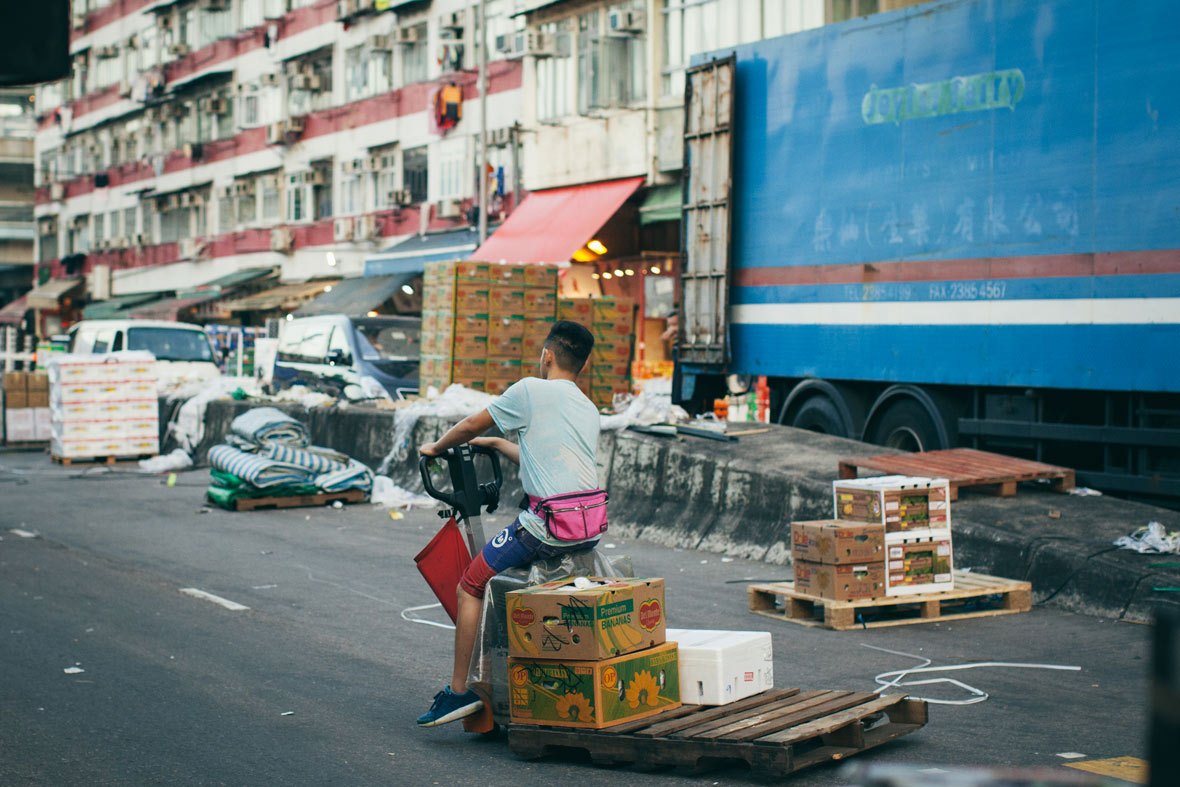
Ng leaves home at 10:30 pm to come to the market, works all night, and gets off around 8:00 am. “I don’t have much time with my wife,” he says. “When I leave for work, she often hasn’t come home yet. My son once asked me not to work in this industry, but he’s grown up now.”
People who work regular hours may not see the graveyard shift as a kind of freedom, but for Ng, working while Hong Kong sleeps is liberating. “When I’m off, I’m totally free,” he boasts. “That makes the hard parts of the job worth it.”
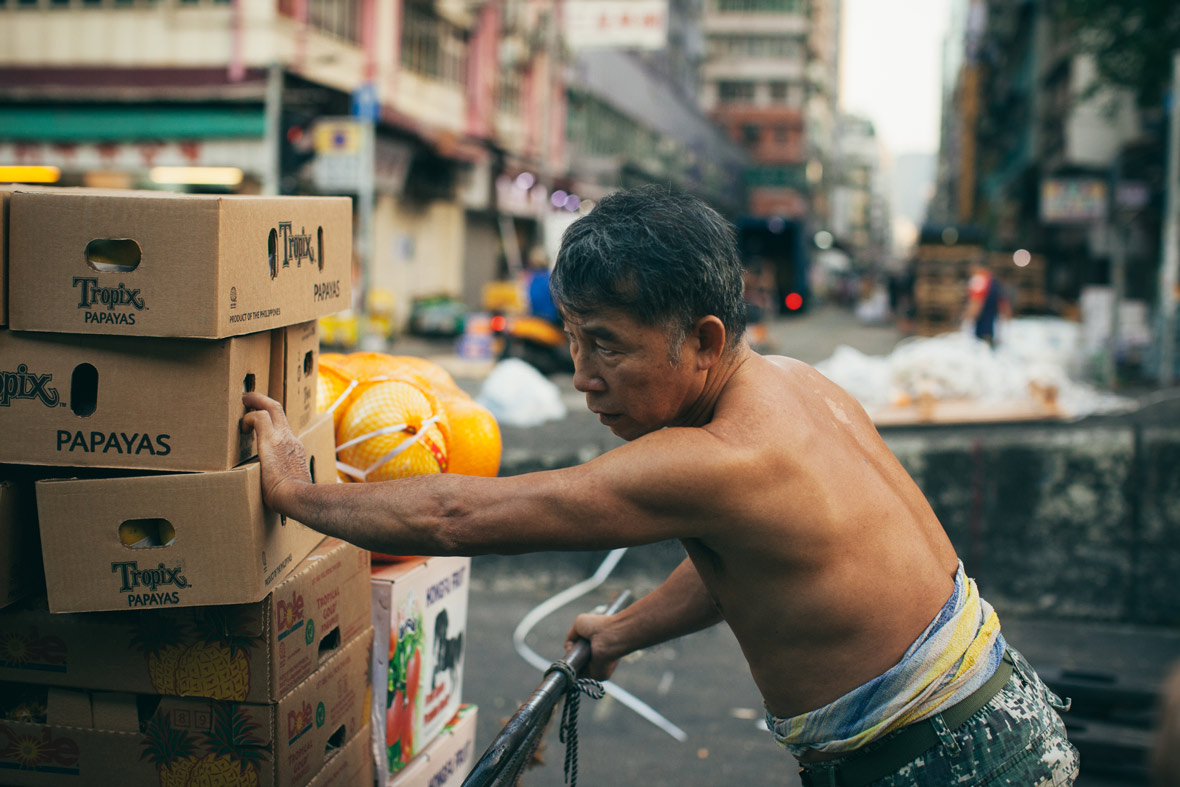
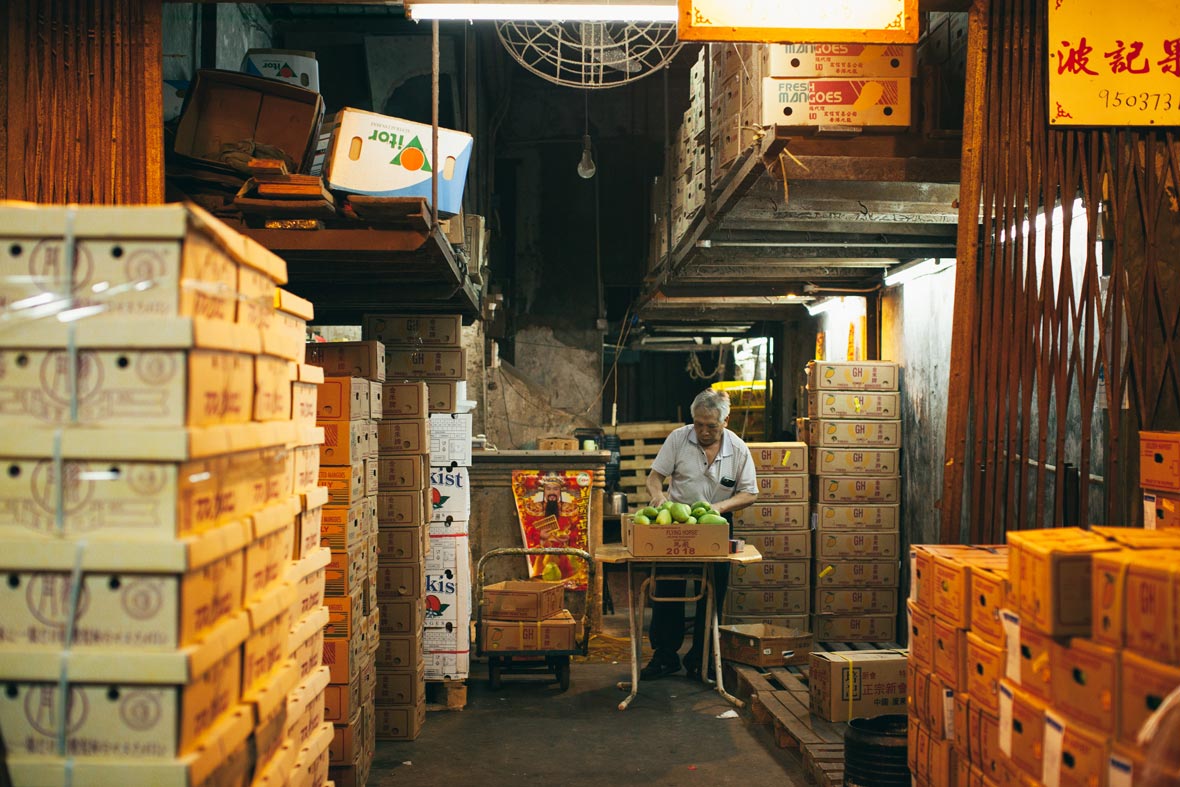
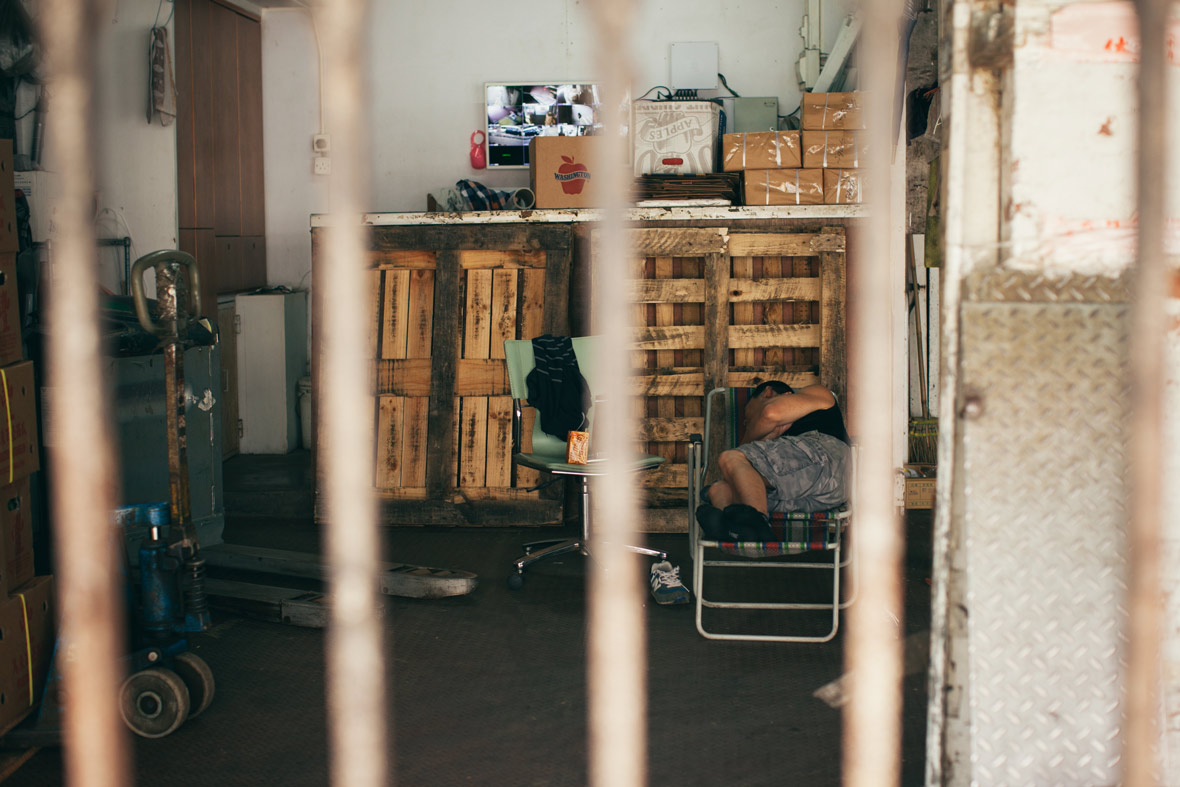
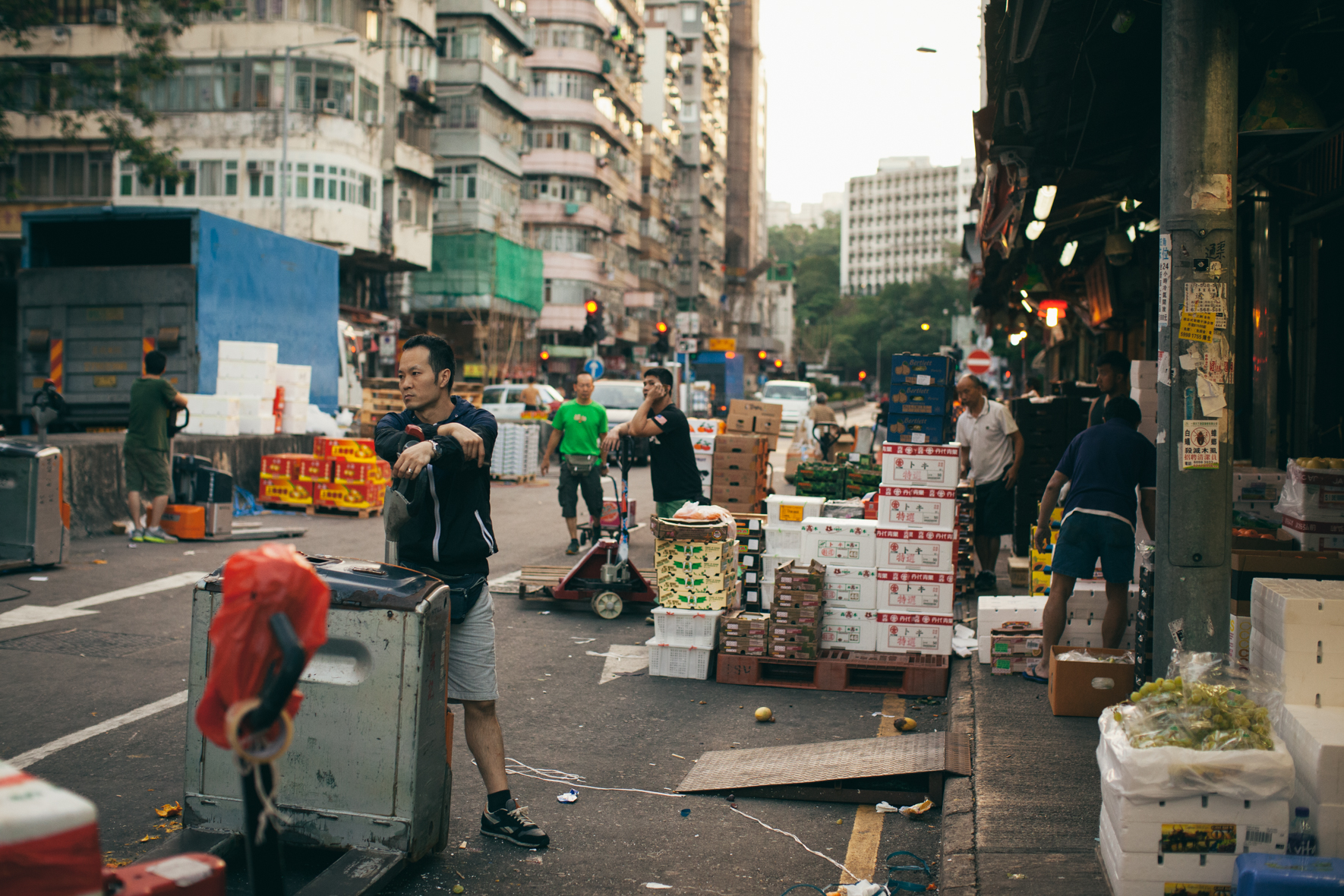
In 1913, when the fruit market was built, Yau Ma Tei wasn’t known for much more than the nearby Tin Hau Temple. Today the main attraction is the market, which covers around 14,000 m2 and serves nearly 250 vendors. Since the 1970s, there have been proposals to relocate it, even though it’s been designated a historic building, because of the noise and the traffic disruption it causes. As of now, though, the market still stands in all its shirtless, cart-filled glory.
According to Lam, in the past, some of the noise came from the fighting that took place when the triads were more active nearby. “For some of the guys who worked in the market, physical violence was their only response to any conflict, and it drew attention.”
In addition to freedom, a tight-knit community also keeps people around. Mr. Sum, who’s 31, found his first job at Yau Ma Tei. Now, rather than hauling boxes of mandarins at 2:00 am, he comes in at 5:00 am to handle the books. Sum says that the market’s family-like relationships between merchants and customers, which have withstood natural disasters and economic downturns, are hard to find nowadays.
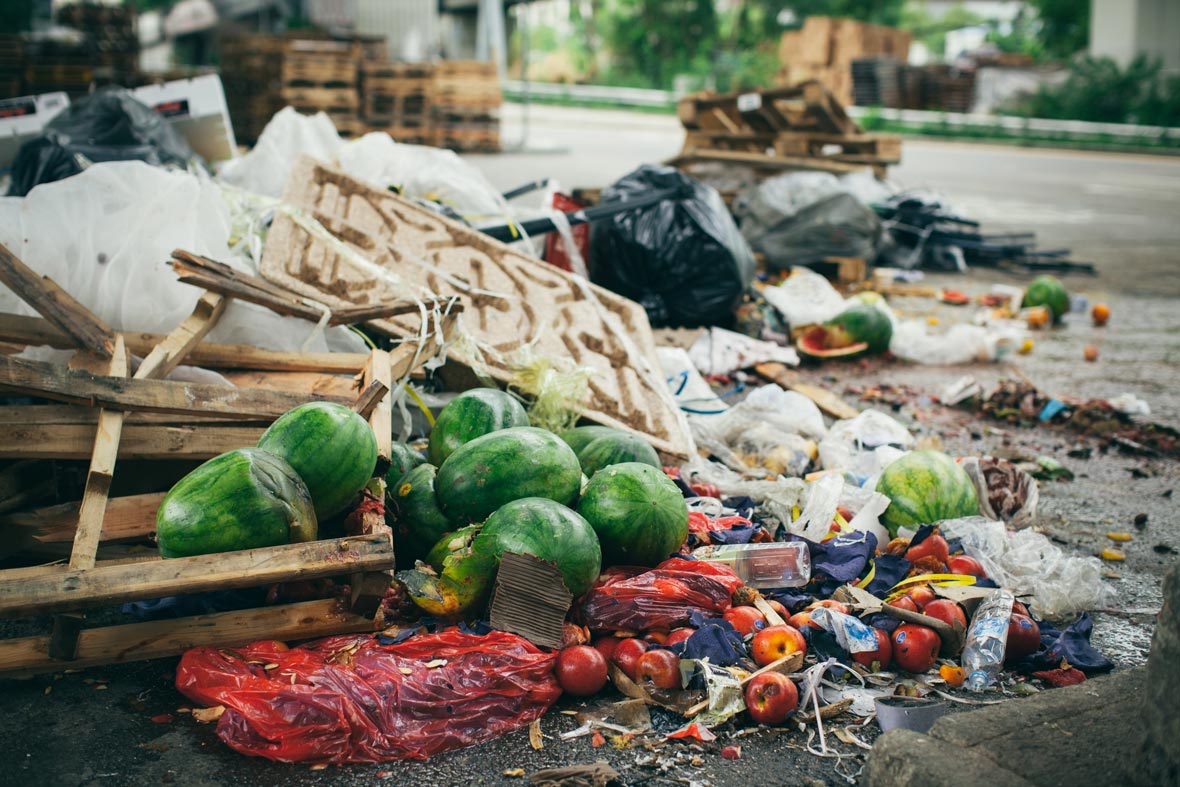
“Human relationships are important here. We’re very close,” he says. “In other industries, people often care more about money than relationships. We’ve been working with some of our customers for a very long time, so if we ever need help, they’ll help us out, even if they lose money—and we’ll do the same for them. I don’t think there are many industries like that in Hong Kong anymore.”
The common complaint that young people in Hong Kong today are afraid of hard work finds an echo at the market. Many stall owners are frustrated at how difficult it has become to find people willing to do the physical labor their jobs require. “Sure, the gangsters fought over turf and sold drugs from time to time,” says Lam. “But then again, they were willing to work hard.”
Photographer & Contributor: Viola Gaskell
